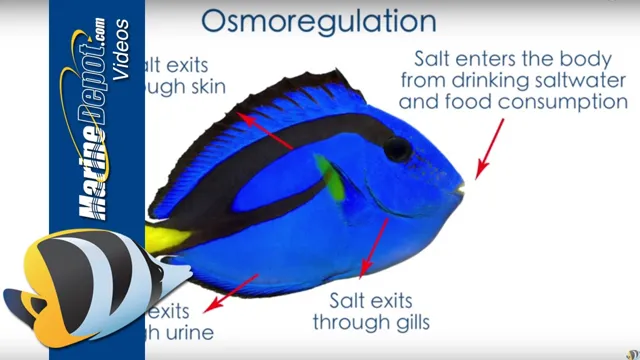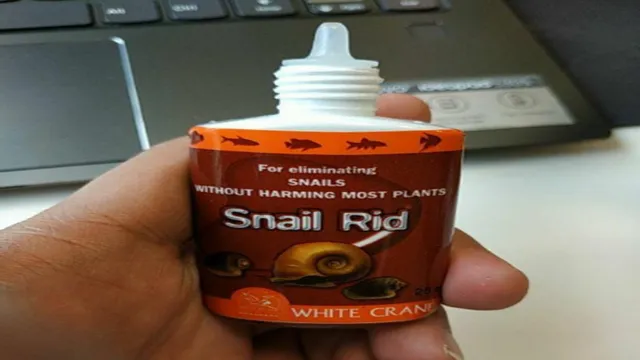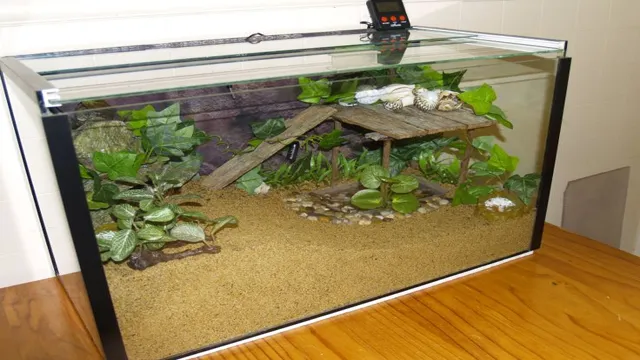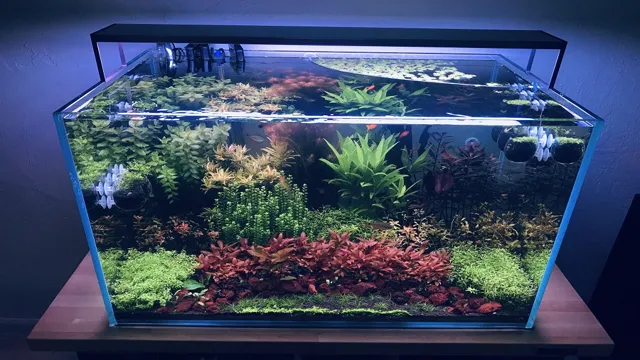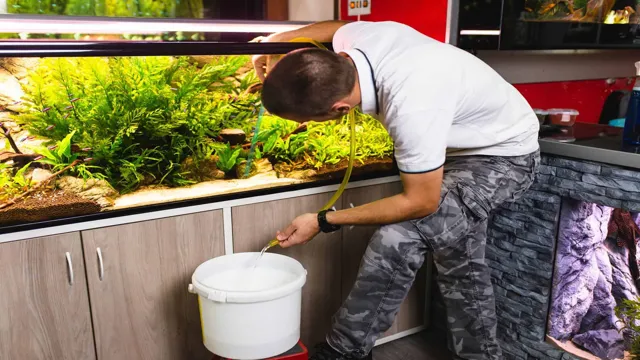How to Add Potassium to Aquarium: Tips and Techniques
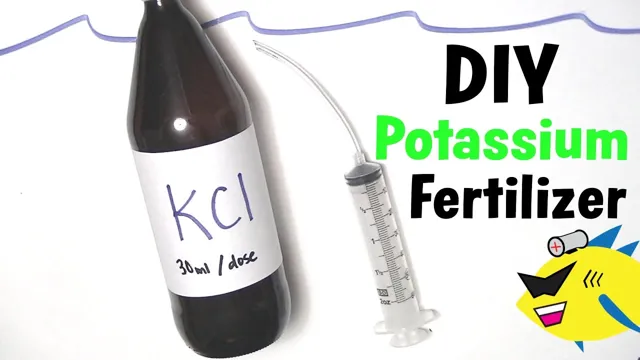
Do you want to keep your aquarium thriving with healthy and happy fish? One important factor to consider is the nutrient balance within the tank. Adding potassium to your aquarium can help promote the growth and vitality of your aquatic plants and animals. Potassium is an essential element that contributes to various biological processes in your aquarium and supports overall health.
But, how do you add potassium to your tank? There are several ways to do this, including using potassium supplements, adding potassium-rich fertilizers, or even incorporating foods that are high in potassium. It’s important to note that potassium levels should be monitored regularly to ensure they don’t become too high, which can be harmful to your aquatic inhabitants. By properly maintaining potassium levels in your aquarium, you can promote a thriving and balanced ecosystem.
Your fish and plants will thank you for the effort with vibrant colors, active behavior, and overall health. Keep reading to learn more about adding potassium to your aquarium and how to do it safely and effectively.
Why Potassium is Important for Your Aquarium
If you want to ensure that your aquarium is a healthy and thriving environment for your aquatic pets, then it is important to understand the role that potassium plays in maintaining water quality. Potassium is an essential nutrient for aquatic plants, promoting healthy growth and vibrant colors. Additionally, it can help regulate the pH level of the water and improve the overall health of your fish.
So, if you’re wondering how to add potassium to your aquarium, there are a few options available. You can use a potassium-rich fertilizer specifically designed for aquariums or add potassium chloride to the water. It’s important to keep in mind that too much potassium can be harmful to your aquarium, so be sure to follow dosage instructions carefully.
By properly maintaining potassium levels in your aquarium, you can ensure that your plants and fish thrive in a healthy, well-balanced environment.
Maintains Plant Health
Potassium is a vital nutrient for maintaining plant health in your aquarium. Not only is it essential for plant growth, but it also plays a significant role in the overall health and wellbeing of aquatic plants. One of the primary functions of potassium is to regulate water movement within the plant.
This helps the plant to maintain its structure and stability, even in high water flow areas. Potassium also helps to increase plant resistance to diseases, pests, and environmental stressors. Without enough potassium, plants can become weak, stunted, and susceptible to a range of health issues.
Therefore, it is crucial to ensure your aquarium plants have sufficient potassium levels to thrive. Adding a potassium supplement to your aquarium can help provide your plants with the nutrients they need to grow and remain healthy, ultimately creating a thriving and beautiful underwater ecosystem.
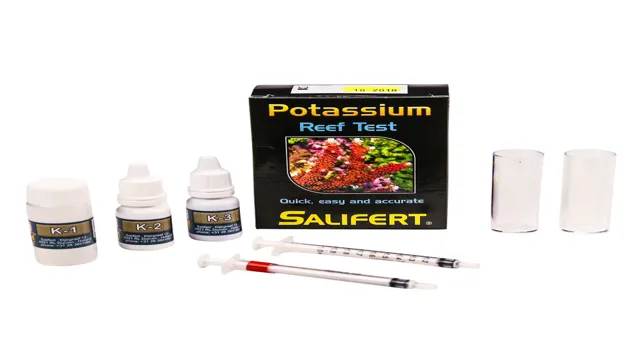
Promotes Fish Health
Potassium is a vital nutrient that promotes the health and well-being of fish in your aquarium. Potassium helps regulate osmotic pressure, which affects the balance of fluids inside and outside of fish cells. Without enough potassium, fish can become dehydrated, leading to a host of health problems, including reduced growth, breathing difficulties, and even death.
In addition, potassium plays a crucial role in fish metabolism, helping to break down carbohydrates, proteins, and fats. This process provides fish with the energy they need to swim, hunt, and perform other essential activities. To ensure that your aquarium contains enough potassium, consider adding supplements designed specifically for fish.
By doing so, you can help your aquatic pets stay healthy and happy for years to come.
Methods for Adding Potassium
If you’re looking to add potassium to your aquarium, there are a few methods you can try. One option is to use liquid potassium supplements, which can be added directly to your tank. Another method involves utilizing potassium-rich substrates, such as clay or volcanic rock.
These can slowly release potassium into the water over time. Another popular option is adding potassium-rich foods to your fish’s diet, such as seaweed or spinach. This approach not only provides the added potassium, but also adds variety to your fishes’ diet.
Regardless of which method you choose, it’s important to monitor the potassium levels in your aquarium regularly to ensure they remain within a safe and healthy range for your aquatic inhabitants.
Using Potassium Chloride
Potassium Chloride Potassium is an essential nutrient for plant growth and development, and its availability plays a significant role in determining plant yield. Adding potassium to soil is necessary, especially for those plants that require high levels of the mineral. One possible way of doing this is with potassium chloride.
When using potassium chloride, there are a few methods of application. The first method involves broadcasting the potassium chloride on top of the soil and mixing it in. This method may work well for large areas but may be cumbersome for small plots.
Alternatively, potassium chloride can be applied in a trench or furrow alongside the row or area that requires additional potassium. This method is useful for deep-rooted crops such as tomatoes or peppers. Finally, another way to apply potassium chloride is by directly injecting it into the plant stem.
To do this, a small hole is drilled into the stem, and the potassium chloride is then injected into the hole. This method requires skilled work to avoid inflicting harm to the plant. Regardless of the method used, it is essential to follow application instructions.
When not appropriately handled, potassium chloride can contribute to a buildup of chloride in soil, leading to plant toxicity. So, one must be careful when using potassium chloride and follow application instructions.
Using Potassium Sulfate
If you’re looking to add potassium to your soil, potassium sulfate is a great option. But how do you add it? There are a few methods. One is to mix it into the soil before planting.
This can be done by digging the soil and mixing in the potassium sulfate evenly. Another method is to add it as a top dressing after planting. Sprinkle it evenly around the plant and lightly work it into the soil.
It’s important to note that overuse of potassium sulfate can lead to plant damage, so be sure to follow the recommended application rates. Also, keep in mind that potassium can affect pH levels, so it’s a good idea to test your soil regularly to ensure it’s in the proper range. Overall, adding potassium sulfate can help improve the health and yield of your plants.
Using Sea Salt Mix
Sea salt mix If you’re using sea salt mix to add important minerals to your tank, you may be wondering how to get enough potassium in there. There are a few methods you can use, and you may want to experiment to see which works best for you. One option is to add a potassium supplement to your tank.
This can be in liquid or powder form and can be found at most pet stores or online. Another option is to add potassium-rich foods to your tank. Banana peels, spinach, and sweet potatoes are all good options.
Simply chop them up and add them to your tank in small quantities. Finally, you can add potassium sulfate to your sea salt mix before adding it to your tank. This will ensure that there’s plenty of potassium in your water from the get-go.
Whatever method you choose, be sure to monitor your tank’s chemistry regularly to make sure everything stays within healthy ranges.
How to Determine Potassium Levels
If you’re wondering how to add potassium to your aquarium, the first step is determining the current potassium levels. The most accurate way to do so is by using a potassium test kit designed specifically for aquariums. This kit will take into account the unique conditions of your aquarium and provide an accurate reading of the potassium levels.
Once you know the current levels, you can determine if you need to add potassium to your aquarium. Potassium is an essential element for plant growth in your aquarium, so it’s important to maintain the appropriate levels for healthy aquatic vegetation. If you decide to add potassium, make sure to use a high-quality source designed for aquariums.
Adding too much potassium can be harmful to your fish and other aquatic life, so it’s important to follow the instructions carefully. With proper monitoring and care, you can ensure that your aquarium has the appropriate levels of potassium and thriving aquatic plants.
Testing Water Parameters
Potassium levels are important to monitor in your aquarium because this nutrient plays a vital role in plant growth and health. One way to determine your aquarium’s potassium levels is to use a test kit specifically designed to measure potassium. These kits typically include a color chart to match the color of your water sample and determine the concentration of potassium.
It’s important to follow the kit’s instructions carefully and to make sure your water sample is properly collected and measured for accuracy. If your potassium levels are too low, consider adding a potassium supplement to your aquarium. However, it’s important not to overdose on potassium, as high levels can also be harmful to your fish and plants.
Maintaining proper potassium levels will not only promote healthy plant growth but will also lead to a thriving aquarium ecosystem.
Monitoring Plant Health
Potassium Potassium is an essential macronutrient necessary for the proper growth and development of all plants. The levels of potassium in the soil need to be monitored to ensure that plants get the right amount of this nutrient. One way to determine the potassium levels in the soil is by using a soil testing kit.
These kits are readily available and easy to use. They come with step-by-step instructions, and all the necessary materials needed to conduct the test. The results obtained from the soil test will provide information on the soil’s nutrient content, including potassium levels.
It is recommended that the soil be tested at least once a year to ensure that plants get the necessary nutrients for optimal growth and health. Proper potassium levels are vital for plant growth, as it helps regulate water balance and increases stress tolerance, leading to better yields and stronger plants.
Conclusion
Don’t be a potato when it comes to adding potassium to your aquarium! With a little bit of knowledge and some potassium supplements, your aquatic plants will be thriving in no time. Just remember, an ounce of prevention is worth a pound of cure when it comes to maintaining a healthy aquatic ecosystem. So be potassium-cious and keep your aquarium balanced and beautiful!”
FAQs
Why is adding potassium important for aquarium plants?
Adding potassium helps to promote healthy growth in aquarium plants and can prevent deficiencies such as yellowing or stunted growth.
What are some common sources of potassium for aquariums?
Common sources of potassium include potassium sulfate, potassium chloride, and potassium nitrate. These can be found in specialized aquarium plant fertilizers.
How do I know if my aquarium plants are potassium deficient?
Signs of potassium deficiency in aquarium plants include yellowing leaves, brown spots, and stunted growth. A nutrient test kit can also be used to check potassium levels in the water.
Can too much potassium harm aquarium plants?
Yes, too much potassium can be harmful to aquarium plants and can cause toxicity. It is important to follow dosage instructions carefully and test nutrient levels regularly.
Can potassium be added to the aquarium through food or other supplements?
While some fish foods and supplements may contain trace amounts of potassium, it is generally not enough to fulfill the needs of aquarium plants. Specific potassium supplements for aquariums should be used.
How often should I add potassium to my aquarium?
The frequency of adding potassium to an aquarium depends on the needs of the plants and the water parameters. It is recommended to start with a small amount and increase gradually while monitoring the plant’s growth and water quality.
Are there any other benefits to adding potassium in an aquarium?
In addition to promoting healthy plant growth, potassium can also help to balance the pH levels in the aquarium and support the health of fish and other aquatic animals.

